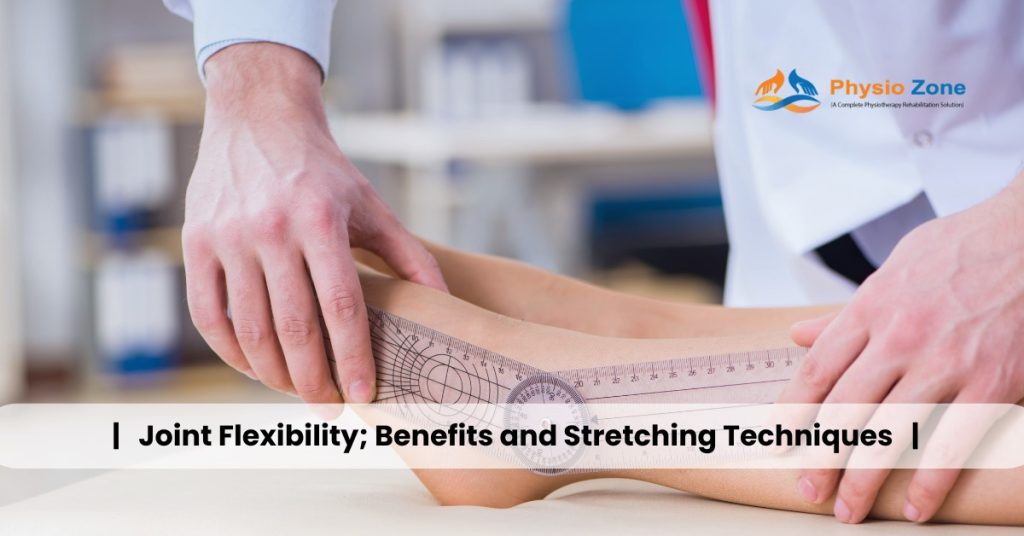Joint flexibility is an essential aspect of overall health. It refers to the ability of your joints to move through their full range of motion. Keeping your joints flexible not only helps in improving your mobility but also prevents injuries, reduces pain, and enhances your overall quality of life. In this post, we’ll discuss why joint flexibility matters, the benefits of stretching, and some easy techniques to improve it.
What is Joint Flexibility?
Joint flexibility is the ability of your joints to move freely within their normal range of motion. Flexibility is essential for day-to-day tasks such as bending, stretching, and even walking without discomfort. Good joint mobility improves your posture and allows you to move with ease.
Why Does Flexibility Matter Every Day?
Good flexibility plays a major role in everyday activities. Whether it’s tying your shoes, reaching for something on a high shelf, or simply walking, flexible joints make these tasks easier and less painful. In addition, regular stretching prevents stiffness, keeps you more active, and can improve your performance in physical activities like sports or exercise.
Top Benefits of Joint Flexibility
There are several benefits to maintaining or improving your joint flexibility:
- Prevents Injuries: Flexible joints are less likely to get strained or injured during physical activities.
- Reduces Pain: Stretching can reduce joint pain caused by conditions like arthritis.
- Enhances Posture: Flexibility in key areas like your hips and shoulders helps you stand taller and more aligned.
- Improves Mobility: Flexible joints help you move more freely, making daily activities easier and more comfortable.
How Flexibility Improves Your Movement?
When your joints are flexible, they can move more smoothly. This increases your overall range of motion, making movements more efficient and fluid. Flexibility also helps to prevent stiffness and discomfort, allowing you to perform both everyday activities and physical exercises with less effort.
Easy Stretches for Better Mobility
If you’re you’re to increase your joint mobility, here are some easy stretches you can do daily:
- Hamstring Stretch: Sit on the floor and stretch one leg out. Reach toward your toes to stretch the back of your leg.
- Shoulder Rolls: Gently roll your shoulders forward and backward to release tension in the upper body.
- Hip Flexor Stretch: Step one leg forward and bend your knee while keeping the other leg straight to stretch your hip.
- Neck Tilts: Gently tilt your head from side to side to stretch the muscles in your neck.
Safe Stretching Techniques
When stretching, always aim to avoid overstretching. Here are some techniques to ensure your stretching is safe:
- Start Slowly: Warm up your body before stretching.
- Hold the Stretch: For each stretch, hold for 15-30 seconds to let your muscles adjust.
- Breathe Deeply: Breathing deeply helps your body relax into the stretch
- No Bouncing: Avoid bouncing while stretching to reduce the risk of muscle strain.
How to Avoid Injury While Stretching?
Injury prevention is key when working on flexibility. To minimize the risk of injury:
- Stretch Regularly: Consistency is key to improving flexibility without overdoing it.
- Don’t to Pain: Stretch to the point of mild discomfort, not pain.
- Listen to Your Body: If something feels wrong, stop stretching and seek guidance from a healthcare professional.
- Avoid Cold Muscles: Always warm up before stretching to increase muscle flexibility.
Flexibility vs. Strength: What’s Your Joints?
Both flexibility and strength are crucial for joint health. Flexibility exercises allow your joints to move through a full range of motion, while strength helps support those joints and keep them stable. A balanced routine that includes both stretching and strength training will improve joint function and overall health.
How Often Should You Stretch?
To see improvements in joint flexibility, it’s important to stretch regularly. Ideally, stretch every day or at least 3-4 times per week. This will ensure that your joints stay flexible and healthy, reducing the risk of stiffness and injury.
Why Warm-Ups and Cool-Downs Matter?
Warming up before stretching is important to prepare your muscles and joints for movement. A proper cool-down after stretching helps reduce muscle tightness and allows your body to relax. Both warm-ups and cool-downs prevent injury and improve the effectiveness of your stretching routine.
Conclusion
Joint flexibility is a vital aspect of overall health, ensuring that your body moves freely and efficiently. Regular stretching can reduce pain, prevent injuries, and improve your posture and mobility. By incorporating simple stretching techniques into your routine, you’ll maintain flexible, healthy joints. Always remember to stretch safely, listen to your body, and take care of your joints for a more active and pain-free life.
Frequently Asked Questions
What is the best way to improve joint flexibility?
The best way is by regularly performing stretching exercises and incorporating them into your daily routine.
Can stretching prevent joint pain?
Yes, regular stretching can reduce joint stiffness and alleviate pain caused by conditions like arthritis.
How long should I hold a stretch?
Hold each stretch for 15-30 seconds for maximum benefit.
Is it safe to stretch every day?
Yes, stretching daily is safe as long as you do it gently and without pushing your body too hard.
What should I avoid when stretching?
Avoid bouncing, overstretching, and stretching cold muscles. Always warm up first.
How can I tell if I’m stretching too much?
If you feel sharp pain or discomfort, stop immediately. Stretch to a point of mild tension, not pain.
Can strength training help with flexibility?
Yes, strength training helps support your joints and improves flexibility by increasing muscle balance.
Is stretching enough for joint health?
While stretching is important, strengthening exercises should also be part of your routine for overall joint health.
When is the best time to stretch?
Stretching is most effective after a warm-up or exercise session, but it can also be done at any time to improve flexibility.

